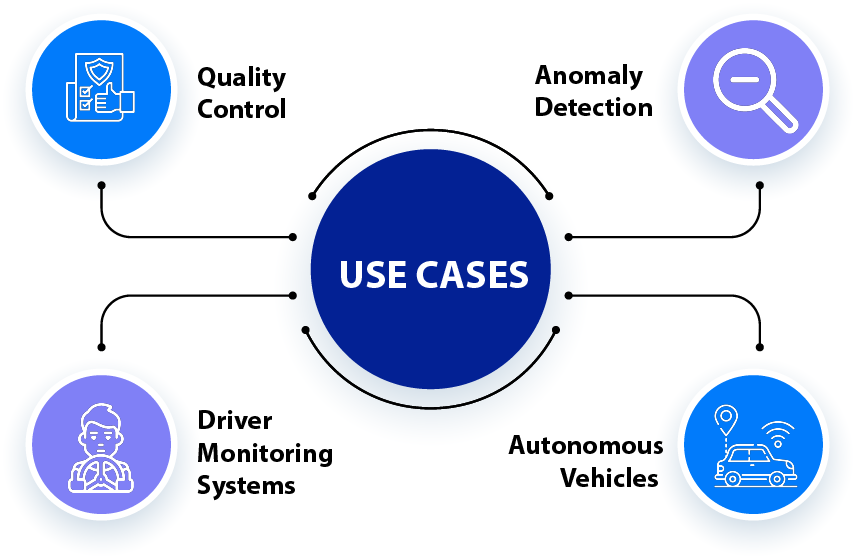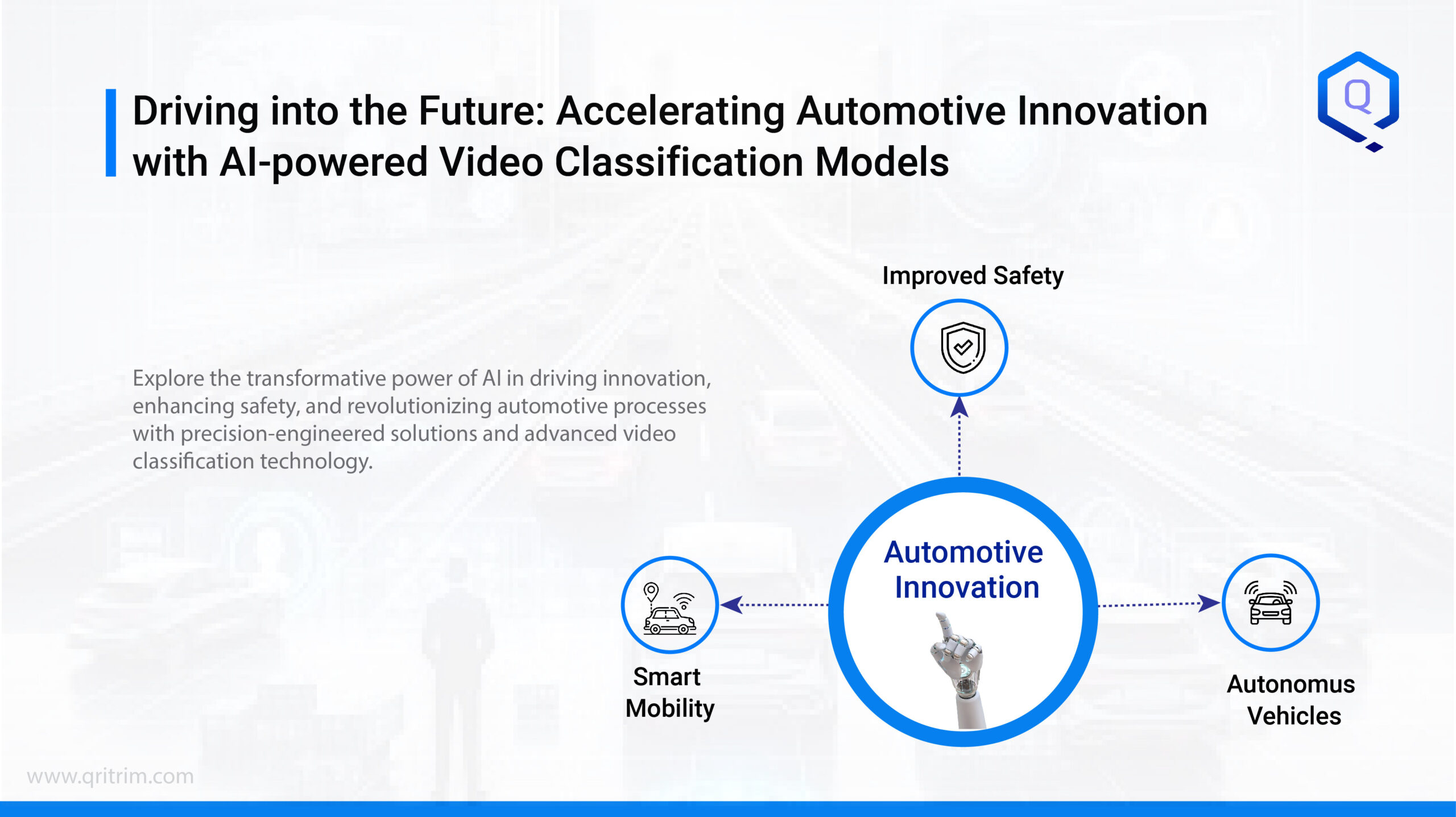Video classification models are a critical component of cutting-edge AI technology, revolutionizing the automotive sector in a myriad of ways. These models are designed to analyze video content, enabling the categorization of videos based on their unique attributes. In the automotive industry, this technology holds immense importance as it facilitates various operations critical to the sector’s functioning. From quality control in manufacturing processes to driver monitoring systems and autonomous vehicle perception, video classification models play a pivotal role in enhancing safety, efficiency, and innovation within the automotive landscape. As the industry continues to embrace AI and automation, video classification models are at the forefront of transformative advancements, offering unparalleled capabilities that have the potential to reshape the future of automotive technology.
Understanding Video Classification Models
Video classification models are a fundamental component of AI technology, particularly in the domain of content analysis. These models are engineered to discern and categorize video content based on its unique characteristics and elements. By leveraging advanced machine learning and deep learning techniques, video classification models can effectively analyze and interpret the content of videos, enabling the identification of specific objects, actions, scenes, or patterns within the visual data.
The primary function of video classification models is to categorize videos into distinct classes or labels, allowing for efficient organization and analysis of vast video datasets. Through the utilization of diverse algorithms such as convolutional neural networks (CNNs) and recurrent neural networks (RNNs), these models extract intricate features from video frames, facilitating the recognition and classification of complex visual information. This process empowers the models to identify and differentiate between various content types, including but not limited to, human activities, environmental scenarios, and object interactions.
Moreover, video classification models play a pivotal role in facilitating applications such as video surveillance, behavior analysis, and content moderation. By accurately categorizing videos based on their content, these models contribute to enhancing the capabilities of systems designed for security monitoring, trend analysis, and content filtering. Furthermore, in the automotive industry, video classification models can aid in tasks such as autonomous vehicle perception, quality control, and anomaly detection, thereby paving the way for improved safety, productivity, and innovation.
In essence, video classification models represent a formidable advancement in AI technology, enabling the automated and systematic categorization of video content, and fostering an array of transformative applications across diverse industries.
Importance of AI in Automotive Industry
The automotive industry stands on the cusp of a technological revolution driven by the burgeoning capabilities of Artificial Intelligence (AI). AI has become increasingly critical to the industry, offering innovative solutions that are transforming the way vehicles are manufactured, operated, and maintained.
- Safety Advancements: AI brings cutting-edge safety features to the automotive sector, including driver-assist systems, pedestrian detection, and collision avoidance. These advancements enhance vehicle and road safety, potentially saving lives and reducing accidents.
- Manufacturing Efficiency: AI optimizes manufacturing processes through predictive maintenance, quality control, and automated assembly. This results in improved production quality, reduced downtime, and enhanced operational efficiency, ultimately leading to cost savings.
- Autonomous Vehicles: AI is at the heart of the development of autonomous vehicles, empowering them to perceive and respond to their surroundings in real time. This technology holds the potential to revolutionize transportation, making it safer, more efficient, and accessible.
- Customer Experience: AI-enabled features such as voice recognition, natural language processing, and personalized recommendations enhance the overall customer experience, making vehicles more intuitive and tailored to individual preferences.
- Data-Driven Decision Making: AI facilitates data analysis and predictive insights, empowering automotive companies to make strategic decisions based on comprehensive and real-time data, thus driving innovation and competitive advantage.
- Environmental Impact: AI contributes to the development of eco-friendly vehicles through optimized energy management, predictive maintenance, and advanced powertrain technologies, ultimately reducing the environmental footprint of the automotive industry.
- Regulatory Compliance: AI aids in ensuring compliance with industry regulations and standards, assisting automotive companies in adhering to safety, emissions, and cybersecurity requirements.
In essence, AI has become indispensable in the automotive industry, fueling advancements in safety, efficiency, sustainability, and customer satisfaction. Embracing AI technologies positions automotive companies at the forefront of innovation, driving transformative change and shaping the future of mobility.

Use Case 1: Quality Control
Video classification models play a pivotal role in quality control processes within automotive manufacturing. These models can be employed to analyze video footage of manufacturing lines, enabling the identification of defective parts or irregularities in the production process.
- Defect Detection: Video classification models can identify visual defects in manufactured automotive components such as body panels, electronics, and interior trim. This ensures that only products meeting the specified quality standards proceed further in the manufacturing workflow, thereby enhancing the overall product quality.
- Process Monitoring: By analyzing video feeds, these models can monitor the assembly and manufacturing processes in real-time, detecting any deviations from the standard operating procedures. This real-time detection enables immediate corrective actions, preventing any potential quality issues from escalating.
- Predictive Maintenance: Video classification models can be utilized to predict equipment failure or malfunctions based on the visual data received from the manufacturing environment. This proactive approach ensures that maintenance is performed before any deterioration in product quality occurs, thereby reducing downtime and costly defects.
Use Case 2: Anomaly Detection
Video classification models are instrumental in identifying anomalies in vehicle components during the production phase, providing valuable insights and mitigating potential defects.
- Visual Inspection: These models can analyze visual data to identify anomalies such as irregular shapes, sizes, or unusual markings on the vehicle components. This capability ensures that only components meeting the predefined standards are integrated into the final product.
- Early Defect Detection: Video classification models can detect anomalies early in the production process, preventing the need for costly rework or product recalls. By flagging anomalies in real-time, these models facilitate prompt corrective actions, preserving product quality and minimizing waste.
- Optical Character Recognition (OCR): Utilizing OCR capabilities, these models can also inspect and verify texts, serial numbers, or codes on components with precision, ensuring that each part aligns with the required specifications and standards.
Through these applications, video classification models significantly contribute to upholding the quality and integrity of automotive manufacturing processes, safeguarding product quality and enhancing overall operational efficiency.
Use Case 3: Driver Monitoring Systems
Video classification models play a pivotal role in driver monitoring systems, contributing to enhanced safety features and overall driver well-being.
- Facial Recognition: These models use facial recognition to monitor driver attentiveness, drowsiness, and alertness. By analyzing facial cues and eye movements, the system can detect driver fatigue or distraction, prompting timely alerts or interventions to prevent accidents.
- Gesture Recognition: Video classification models can interpret driver gestures and movements, providing valuable insights into driver behavior, engagement, or response to road stimuli. This information aids in adapting vehicle systems and alerts to suit the driver’s state, ultimately ensuring a safer driving experience.
- Emotion Recognition: By analyzing facial expressions and body language, these models can gauge the emotional state of the driver, enabling the system to offer interventions or adjustments to alleviate stress or fatigue, thereby promoting a safer driving environment.
Use Case 4: Autonomous Vehicles
Video classification models play a crucial role in enabling autonomous vehicles to perceive and navigate their environments, essential for safe and efficient operations.
- Object Detection: These models are used to detect and classify objects in the vehicle’s surroundings, such as other vehicles, pedestrians, road signs, and obstacles. This information is crucial for autonomous vehicles to make real-time decisions and navigate safely through traffic.
- Path Prediction: Video classification models can predict the trajectory of moving objects in the vehicle’s environment, aiding the autonomous system in anticipating the movement of other vehicles or pedestrians, enabling it to navigate proactively.
- Environmental Understanding: These models assist in interpreting complex environmental factors such as varying road conditions, weather, and lighting, crucial for ensuring the vehicle’s safe operation in diverse scenarios.
- Behavior Analysis: Video classification models can analyze the behavior of surrounding vehicles, understanding their movements, speed, and intentions. This analysis is essential for autonomous vehicles to make informed decisions when interacting with other traffic participants.
Through these applications, video classification models significantly contribute to the safe and efficient operation of autonomous vehicles, paving the way for a future of enhanced mobility and transportation.
Benefits of Video Classification Models
Video classification models offer a plethora of advantages, enhancing efficiency, accuracy, and driving automation across various automotive applications:
- Enhanced Safety: These models contribute to advanced driver monitoring systems, enabling the detection of driver fatigue and distraction, ultimately enhancing road safety.
- Quality Control: By accurately identifying defects in manufacturing processes, video classification models ensure high product quality and reduce wastage, leading to cost savings.
- Automation: The integration of these models in autonomous vehicles enables efficient and reliable decision-making, paving the way for increased automation in transportation.
- Improved Operational Efficiency: From process monitoring in manufacturing to behavior analysis in autonomous vehicles, these models streamline operations, leading to enhanced efficiency.
- Predictive Maintenance: By enabling predictive analysis of equipment and component deterioration, these models facilitate proactive maintenance, reducing downtime and costs. Challenges and Future Trends
Conclusion
Video classification models stand as a transformative force in driving the capabilities of the automotive industry to new heights. From enhancing safety features through driver monitoring systems to enabling the autonomy of vehicles, these models are poised to revolutionize the way the industry operates, offering unparalleled benefits in terms of efficiency, accuracy, and automation. As these models continue to evolve and overcome challenges, their potential to revolutionize manufacturing, driving, and transportation is undeniable, promising a future of enhanced safety, efficiency, and innovation in the automotive industry.
About Qritrim AI Models
Qritrim’s AI Models offer a precision-engineered solution for businesses, leveraging algorithms like decision trees, random forests, and neural networks to extract insights from data. These models are configurable to suit unique business needs, ensuring seamless integration with existing systems.
Qritrim’s Video Classification Model enhances quality control, provides real-time insights for process monitoring, enables proactive anomaly detection, empowers driver monitoring systems, and crucially contributes to the safe and efficient operation of autonomous vehicles across diverse automotive applications.
Book a demo today to witness the power of AI in driving your business forward.





























